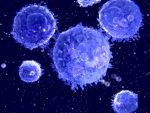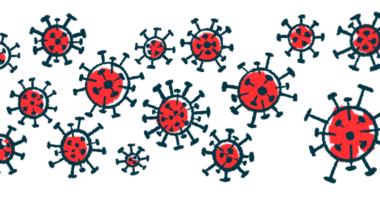Anti-inflammatory signaling molecule IL-35 is reduced in SSc
Cytokine is used by immune system to help 'put the brakes' on inflammation.

People with scleroderma tend to have lower levels of an anti-inflammatory signaling molecule called interleukin-35 (IL-35), a study reports.
Patients with lower IL-35 levels tend to have more skin scarring, according to “Impaired Regulation by IL-35 in Systemic Sclerosis,” which was published in the International Journal of Molecular Sciences.
The immune system uses signaling molecules called cytokines to control inflammation. Some cytokines are proinflammatory while others are anti-inflammatory. Normally, the immune system modulates levels of these various cytokines to fine tune inflammatory responses, but in autoimmune disorders like scleroderma (also called systemic sclerosis, or SSc), abnormal cytokine levels may help drive the disease.
Scientists in Spain and the U.S. evaluated whether the cytokine IL-35 is dysregulated in SSc. This cytokine has anti-inflammatory effects and the immune system normally uses IL-35 to help “put the brakes” on inflammation.
The researchers measured IL-35 and other cytokine levels in blood samples from 32 people with SSc, as well as people without the disease. SSc patients had significantly lower IL-35 levels, but higher levels of pro-inflammatory cytokines, including TGF-beta and IL-17.
Less IL-35, more proinflammatory molecules in SSc
IL-35 showed a negative correlation with TGF-beta and IL-17A. in other words, patients with lower levels of IL-35 tended to have higher levels of the pro-inflammatory cytokines. The patients with lower IL-35 levels also tended to have higher numbers of monocytes, a type of immune cell.
Patients with lower IL-35 levels tended to have more skin involvement, as reflected by higher scores on the modified Rodnan skin score (mRSS), statistical tests showed. Meanwhile, higher TGF-beta levels were correlated with more skin involvement.
“One potential clinical implication of our findings is that lower [blood] levels of IL-35 are associated with greater skin fibrosis [scarring],” the researchers wrote.
Immune cells detect cytokines using specialized protein receptors. IL-35 is detected with a protein called IL-35 receptor (IL-35R). Monocytes of SSc patients had a higher percentage of this receptor.
The researchers also tested how CD4-positive T cells, an immune cell with a critical role in controlling cytokine levels, respond when stimulated with an engineered form of IL-35. Adding IL-35 to these cells reduced their growth and led to less production of the proinflammatory cytokine IL-17, but didn’t substantially affect the production of TGF-beta in cells from SSc patients.
These data suggest that people with SSc have abnormally low levels of the anti-inflammatory cytokine IL-35, which may contribute to the runaway inflammation that drives the disease, said the scientists, who emphasized that more research is needed to understand why IL-35 is reduced in SSc and to assess whether it can be a useful treatment target or clinical marker of the disease.







